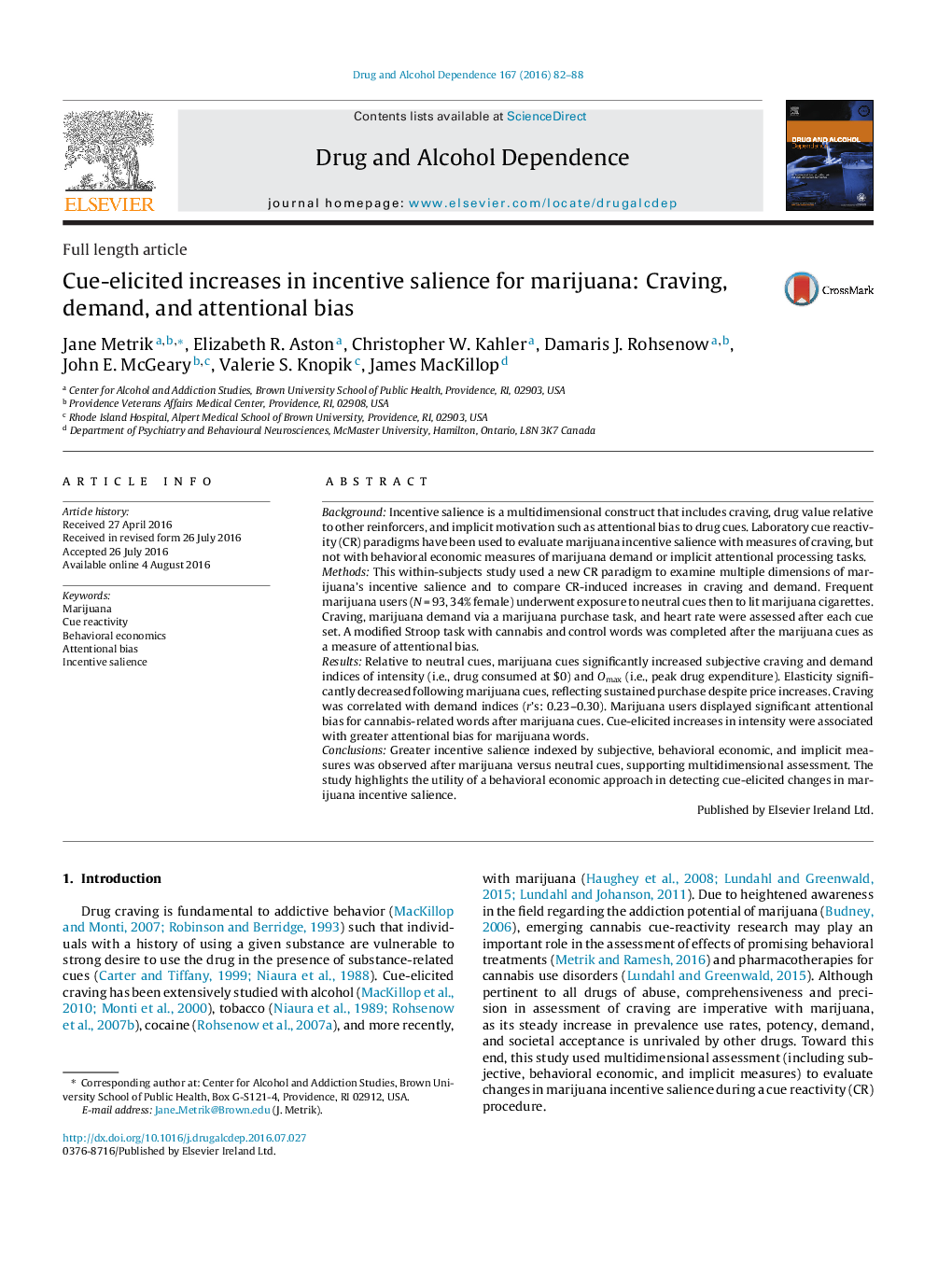| کد مقاله | کد نشریه | سال انتشار | مقاله انگلیسی | نسخه تمام متن |
|---|---|---|---|---|
| 5120498 | 1486124 | 2016 | 7 صفحه PDF | دانلود رایگان |
- Marijuana cues increase craving and marijuana demand via behavioral economic measure.
- Marijuana demand indices of intensity, Omax, and elasticity were affected by cues.
- Cue-elicited increases in demand predicted greater attentional bias to marijuana.
- Multidimensional assessment detects cue-elicited changes in drug incentive salience.
BackgroundIncentive salience is a multidimensional construct that includes craving, drug value relative to other reinforcers, and implicit motivation such as attentional bias to drug cues. Laboratory cue reactivity (CR) paradigms have been used to evaluate marijuana incentive salience with measures of craving, but not with behavioral economic measures of marijuana demand or implicit attentional processing tasks.MethodsThis within-subjects study used a new CR paradigm to examine multiple dimensions of marijuana's incentive salience and to compare CR-induced increases in craving and demand. Frequent marijuana users (NÂ =Â 93, 34% female) underwent exposure to neutral cues then to lit marijuana cigarettes. Craving, marijuana demand via a marijuana purchase task, and heart rate were assessed after each cue set. A modified Stroop task with cannabis and control words was completed after the marijuana cues as a measure of attentional bias.ResultsRelative to neutral cues, marijuana cues significantly increased subjective craving and demand indices of intensity (i.e., drug consumed at $0) and Omax (i.e., peak drug expenditure). Elasticity significantly decreased following marijuana cues, reflecting sustained purchase despite price increases. Craving was correlated with demand indices (r's: 0.23-0.30). Marijuana users displayed significant attentional bias for cannabis-related words after marijuana cues. Cue-elicited increases in intensity were associated with greater attentional bias for marijuana words.ConclusionsGreater incentive salience indexed by subjective, behavioral economic, and implicit measures was observed after marijuana versus neutral cues, supporting multidimensional assessment. The study highlights the utility of a behavioral economic approach in detecting cue-elicited changes in marijuana incentive salience.
Journal: Drug and Alcohol Dependence - Volume 167, 1 October 2016, Pages 82-88
